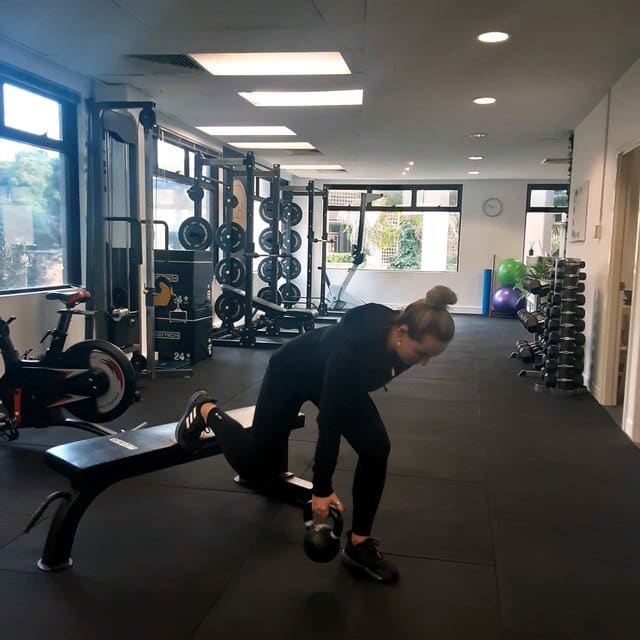Creating an Environment to Foster Good Habits
We all have intentions to eliminate our bad habits and create new habits to foster a better quality of life. We are all aware of the old adage, “motivation is what gets us started, whereas habits are what keeps us going.”
I have regular clients who are regular swimmers; who are currently dealing with a surge of new pool members following the success of the Australian Swimming team in the Olympics. I know full well the experience of walking into a packed out gymnasium in January, only for the gym to return to its normal attendance by February. Unlike some of the bitter people who can’t get onto their beloved bench press for a few weeks, I have nothing against this surge in motivation. However, we also know that the key to long term behavioural change is developing the ‘habit’.
The following blog highlights the importance of changing your environment to foster habits. This is not particularly the avoidance of habitual cues, such as throwing out all of the junk food in the cupboard to eliminate the temptation of unhealthy eating; but more how we can tweak our environment for an intended purpose – and use this mechanism to develop positive habits and behaviour change.
Every habit is initiated by a cue. A more obvious environmental cue means that your habit loop is more likely to be initiated.
For example, in recent times I have made the concerted effort of increasing my water intake. Each day, as a part of the #75hard challenge – I have been drinking a gallon of water! Sounds intense! However, when broken down into smaller and more manageable chunks this is an easily accomplished feat. To trigger my water consumption first thing in the morning, I leave a bottle of water on the kitchen counter – it is the first thing I see as soon as I step outside the bedroom of my small 1-bedroom apartment! There is also a water bottle on my study desk; and scattered around the house in various locations triggering this behaviour of drinking water. (I’ll admit, this is a cue I can more easily get away with by not sharing my apartment with a significant other!)
Similarly, I have tweaked the environment of each room to make it specific for a purpose. For example, my bedroom is purely a place for relaxation. It does not have a TV, computer, workstation etc. I am remiss to even charge my phone in the bedroom! In this Pavlovian scenario, it means that my brain identifies being in the bedroom as a place for rest and relaxation. It is not a place for concentrating on work, engaging with the latest TV shows or other activities that do not fulfil this purpose.
I am careful to ensure my home work station is not a place where I perform tasks that are otherwise distracting to my work productivity. I try not to do work on the couch – because the couch is my area of relaxation. I know that working in this setting, I am more likely to be distracted by other ‘easier’ cues – such as the remote to turn on the TV, or even the more comfy couch cushion as compared to my study chair. Infact, for this reason and the fact that I live in such a small environment – I try and change my cue completely, and do my work down in a coffee shop.
In what is termed as the ‘Law of Least Effort’, your brain is hardwired to follow the path of least resistance. This means that when given the option of two choices, your brain will instinctively choose the easier of the two. This is an important and vital function! As, fundamentally, our brains are hardwired for survival – we don’t want to be expending unnecessary amounts of energy by making things harder than they need to be. But for this reason, if your brain is presented with two cues of turning on the TV or working on an arduous task – when presented with the same number of cues you are most likely to pick the easier of the two – turning on the TV.
Making good habits is an easy action when your environment encourages this choice, and the cues for these behaviours are obvious and plentiful. Simply, we want to tip the balance of these cues to the activities we want to complete!
Conclusion
Scatter your environment with cues which trigger a positive action – for example, leaving water bottles in various locations or leaving fresh fruits in the open where they are constantly visualised and more likely to be consumed.
Similarly, we should make our less productive habits – or the habits we are trying to break, harder to attain. Put your snacks in the top shelf – or get rid of them completely! Replace those snacks on your kitchen table with a healthier alternative. If you are trying to cut down on your TV time, not only should you turn off the TV – but disconnect it completely from the power! Or perhaps, put the remotes in a drawer – meaning the only reason you will be turning ON the TV is with a concerted effort for watching a particular TV show, as opposed to mindless TV droning. Switch off your gaming console and put it into the hallway cupboard.
If you are trying to encourage your exercise habit – leave your joggers, shorts and singlet in a visually obvious location. Put your theraband or weights in the MIDDLE OF THE ROOM, so you are presented with the constant reminder of “have you completed your rehab exercises?”. The more obvious the cue – the more likely the task will be completed.

